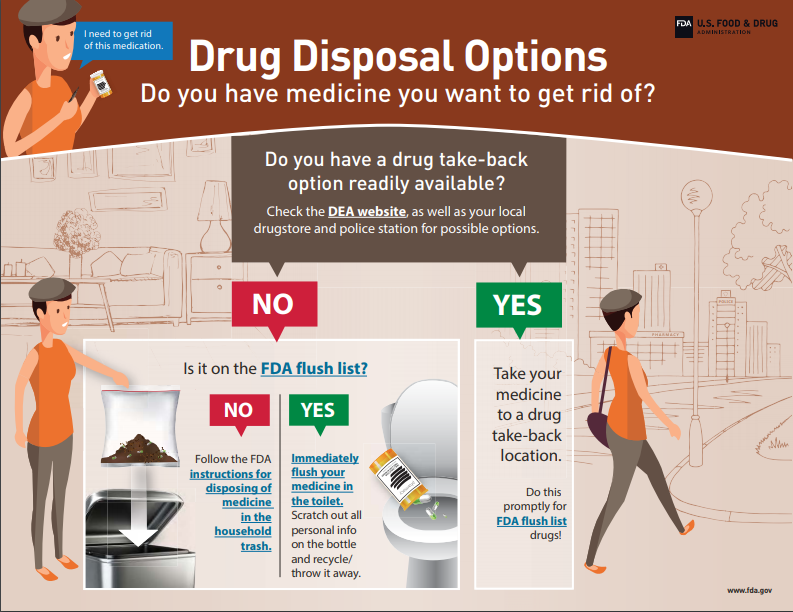Prevention
The Indiana Division of Mental Health and Addiction's Bureau of Mental Health Promotion and Addiction Prevention provides oversight and administration of the Substance Abuse Prevention and Treatment Block Grant to ensure funding that addresses statewide prevention and mental health promotion priorities. It supports evidence-based initiatives that serve to prevent and reduce substance abuse and mental illness, reduce the negative impact of substance abuse and mental illness, and promote overall behavioral health. Suicide, problem gambling, underage drinking, binge drinking, tobacco and illicit drug use, and prescription drug misuse are examples of issues that prevention initiatives may target.
Learn more here.
Resources for Prevention Efforts
Promoting mental health plays a big role in preventing substance abuse. Here are some resources for positive prevention efforts.
- Community Anti-Drug Coalitions of America
- Communities That Care
- Get Smart About Drugs: A DEA resource for parents, educators and caregivers
- Indiana's evidence-based practice guide
- Indiana Local Coordinating Councils
- Indiana Prevention Resource Center
- Indiana Problem Gambling Awareness Program
- Indiana State Suicide Prevention
- National Institute on Drug Abuse
- National Institute on Drug Abuse for Teens
- Office of National Drug Control Policy
- Operation Prevention
- Prevention Insights
- Prevention Technology Transfer Center
- SAMHSA substance abuse and illness prevention
- State opioid strategic plan
- Statewide prevention efforts
- Students Against Destructive Decisions
- Tips for teens
- Youth substance use videos, programs, podcasts and toolkits
Reverse Overdoses with Naloxone
Naloxone, also known by the brand name Narcan®, is a non-narcotic that can reverse opioid overdoses.
Since May 2020, Indiana has invested nearly $4 million in statewide naloxone distribution, including the placement of NaloxBox units and naloxone vending machines. Funds were made available by the federal Substance Abuse and Mental Health Services Administration’s State Opioid Response Grant.
The Indiana Department of Health and Overdose Lifeline, Inc., an Indiana nonprofit dedicated to helping individuals, families and communities affected by substance use disorder through advocacy, education, harm reduction, prevention, resources and support, have distributed over 70,000 doses of naloxone to local health departments, first responders, families, friends and others who are likely to be the first on the scene if someone overdoses.
For resources around naloxone, click here. To locate a naloxone distributor near you, click here.
If you administer naloxone, call 9-1-1 and report the situation.
Safely prescribing and administering prescription opioids
According to the CDC, “Improving the way opioids are prescribed through clinical practice guidelines can ensure patients have access to safer, more effective chronic pain treatment while reducing the number of people who misuse, abuse, or overdose from these drugs.”
Please refer to Indiana's Opioid Prescribing Guidelines and Final Rule to learn the proper procedures and best practices for prescribing opioid medications.
- Indiana Chronic Pain Management Prescribing Rule
- Indiana Guidelines for Opioid Prescribing in the Emergency Department
- Indiana Guidelines for the Management of Acute Pain
Also, visit the American Hospital Association's Opioid Toolkit to learn more about how to address the epidemic.
Parents play an important role in preventing opioid misuse and abuse.
- It’s critically important to educate your children on the dangers of prescription opioids.
- Monitor their use of opioids if they have been prescribed by a licensed medical practitioner.
- Make your prescription opioids inaccessible by following the safe storage and disposal guidelines below.
- Most importantly, don’t fall into the myth that “it can’t happen to MY child.”
Safe storage & disposal of opioids and other prescription medications
- Ask your doctor or pharmacist if any of the medicine you have been prescribed has the potential for abuse.
- Keep medicine out of the reach of children. Lock up any medicine that is at risk for being abused in a cabinet, drawer, or medicine safe.
- Always store medicine in its original container — the label on the bottle provides important information about the medicine.
- Don’t share prescription medicine. A medicine that works for one person may cause harm — even death — to someone else, even if symptoms are similar.
Take-Back Opportunities and disposing of unneeded medications
National Drug Take Back Day is October 23, 2021.
Click here to use the DEA's drug take back location search tool.
Click here to use the Drug Disposal Locator Tool provided by the National Association of Boards of Pharmacy.
Click here for more information regarding drug disposal options. Pharmacies, including Walgreens and CVS, provide kiosks for drug disposal at select locations.
Guidance is also available to consumers on how to properly dispose of unneeded medications.

